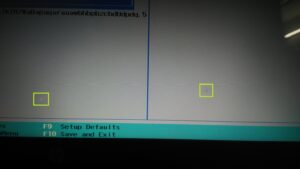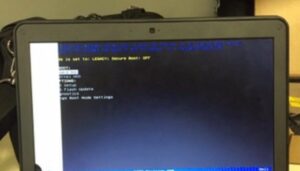5 Shocking Causes of Black Marks on Your Laptop Screen (and How toPrevent Them)
introduction
Did you know that?
Imagine you’re sipping on your favorite cup of coffee while diligently working on your laptop, and suddenly, a small spill or maybe an unnoticed reflection leaves a mysterious black mark on your screen .Surprisingly, an unnecessary accident like a water or coffee spill can indeed leave a permanent, unsightly mark on your beloved appliance.
Ancient textiles: the need for efficiency and aesthetics
In today’s fast-paced world, laptops have become an extension of our personal and professional lives. A clean, clear screen isn’t just about aesthetics; It greatly affects our productivity, visual health and overall user experience. There is something so satisfying and soothing about working on a pristine show, with no distractions taking away from the display.
Exceptions: Black icons on the screen
The black icon on a laptop screen is as mysterious as it is frustrating. These marks can range from tiny scratches that are barely noticeable to larger, more obvious blemishes that cannot be ignored. But what causes these unsightly black marks? The culprits can be many – from physical damage such as pressing too hard on the screen or accidental drops, to spills running over the edges, or even manufacturing defects on. Understanding these causes is the first step in addressing and, more importantly, preventing them.
5 Shocking Causes of Black Marks on Your Laptop Screen
Laptop screens are the windows to our digital world, and maintaining their integrity is crucial for an optimal viewing experience. Surprisingly, several factors, some quite unexpected, can cause those annoying black marks on your screen. Let’s dive into some of these causes and how you might avoid them.
Cause 1: Dead Pixels
Definition
Dead pixels are exactly what they sound like – pixels on your screen that no longer illuminate and appear as permanent black dots. These tiny squares remain black, failing to display colors as they should.
Shocking Element
What’s particularly startling about dead pixels is how they can appear seemingly out of nowhere. One day your screen is perfect, and the next, you notice a black dot that wasn’t there before. Sometimes, even a slight pressure applied to the screen or minor impacts can cause pixels to “die”.
Prevention Tips
To minimize the risk of creating dead pixels:
- Avoid applying pressure to your laptop screen. Even light, seemingly harmless pressure can cause damage.
- Keep your laptop in a stable environment where it won’t be subject to extreme temperatures, as these conditions can also contribute to dead pixels.
Cause 2: Physical Damage
Definition
Physical damage encompasses a range of issues from scratches and cracks to impacts that can leave behind black marks or lines. These marks are not just on the surface but can affect the display beneath the glass.
Shocking Element
The surprising fact about physical damage is how even minor accidents, which seem inconsequential, can result in permanent, noticeable black marks on the screen. Something as simple as an accidental drop of a pencil or a small bump against the table can have lasting effects.
Prevention Tips
To guard against physical damage:
- Always handle your laptop with care. Consider how and where you place it down.
- Invest in a quality laptop case or sleeve that can provide protection against bumps and drops.
- Keep pets and small children away from your laptop. Their unpredictable actions can lead to accidents that your screen might not survive.
Cause 3: Liquid Spills
Definition
A seemingly harmless spill of water, juice, or coffee over your laptop can cause significant damage. Liquids can seep into the smallest openings, making their way to the screen, where they can disrupt the display, leaving noticeable black marks.
Shocking Element
Even if a liquid spill appears to dry up without a trace, it can cause internal damage that isn’t immediately apparent. Over time, this damage can lead to black marks that permanently mar your screen’s appearance.
Prevention Tips
To protect your laptop from liquid damage:
- Consider using a spill-proof keyboard cover, which can provide a first line of defense against spills.
- Always keep beverages away from your laptop. It’s best to maintain a safe distance to prevent any accidental spills.
Cause 4: Pressure Marks
Definition
Pressure marks occur when an object presses against your laptop screen for an extended period, leading to permanent black markings. These objects could range from pens left on the keyboard before closing the lid to accidentally sitting on a closed laptop.
Shocking Element
The everyday items you carry in your bag or leave around your laptop can become culprits of significant damage. Pressure marks can appear from actions as simple as packing your laptop too tightly in a bag.
Prevention Tips
To safeguard against pressure marks:
- Use bags with dedicated laptop compartments that provide extra padding.
- Avoid placing heavy objects on or against your laptop, whether it’s closed or open.
Cause 5: Internal Display Issues
Definition
Sometimes, the cause of black marks on your screen is an internal display malfunction. This could be due to a variety of reasons, from a faulty display component to issues with the laptop’s graphics processor.
Shocking Element
Realizing that these marks are due to internal issues means that a simple DIY fix might not be possible. Professional repair services may be needed to address the underlying cause effectively.
Prevention Tips
To prevent potential internal display issues:
- Use a surge protector to safeguard your laptop from sudden voltage spikes.
- Perform regular cleanings to prevent dust and debris buildup, which can overheat components and lead to malfunctions.
How to Identify the Cause of Black Marks on Your Laptop Screen
Identifying the root cause of black marks on a laptop screen is the first step toward finding the right solution. Different indicators can help differentiate between common issues like dead pixels, physical damage, and liquid damage. Here’s how to tell them apart based on their appearance.
Dead Pixels
- Appearance: Look for stationary dots that do not change color or move when you touch the screen or open different applications. Dead pixels are typically black but can also appear as white or colored dots.
- Indication: Uniform, non-spreading dots scattered across the screen.
Physical Damage
- Appearance: Scratches, cracks, or chips on the screen surface. Physical damage can also manifest as lines or black spots where the LCD appears to be bleeding.
- Indication: Irregular patterns or marks that have a clear point of impact or distortion.
Liquid Damage
- Appearance: Blotches or areas where the color seems washed out or darker than the surrounding areas. These marks can spread or change shape over time.
- Indication: Stains or discoloration that worsen or spread with time, often accompanied by issues with screen functionality.
For identifying internal display issues, it’s harder to determine the cause based on appearance alone. Common signs include flickering, discoloration, or persistent screen abnormalities not explained by external damage or dead pixels. In such cases, consulting a professional is the best course of action. They can conduct a thorough diagnosis to pinpoint the issue.
General Cleaning Tips for Laptop Screens
To maintain the clarity and responsiveness of your laptop screen, regular cleaning is essential. However, it’s important to do so in a manner that doesn’t inadvertently cause damage.
- Use a Microfiber Cloth:
- Always use a soft, lint-free microfiber cloth. It’s gentle on the screen and effective in removing dust and smudges without scratching the surface.
- Appropriate Screen Cleaner:
- Opt for a cleaner specifically designed for laptop screens. These solutions are formulated to be effective without damaging sensitive display components.
- Avoid Harsh Chemicals and Abrasive Cloths:
- Never use harsh cleaning agents like bleach or ammonia-based cleaners. These can strip away protective coatings and cause permanent damage to your screen.
- Abrasive materials or paper towels can leave scratches, so they should be avoided.
Cleaning Method:
- Lightly dampen the microfiber cloth with the screen cleaner. Do not spray the cleaner directly onto the screen.
- Gently wipe the screen in a circular motion, focusing on areas with fingerprints or smudges.
- Use a dry part of the cloth to remove any excess moisture and avoid streaking.
conclusion
Taking precautions to avoid black marks on your laptop screen is paramount to maintaining its aesthetics and functionality. Most black marks can be avoided by taking proper precautions and monitoring how your machine is handled, maintained and maintained properly. Knowing how to distinguish between types of screen damage allows you to take appropriate preventive and repair measures.
A consistent approach to regular gentle cleaning combined with storage and handling properties can work wonders in preserving your laptop screen. Even when accidents occur, long-term damage can be minimized by understanding what can cause these accidents and how to respond to them. When these techniques play out, your screen can remain a clear window into your digital world.
FAQ (Frequently Asked Questions)
Q: Can I fix dead pixels?
A: Dead pixels represent permanent damage to the screen’s hardware. They are usually not fixable at home. Sometimes certain software solutions claim to revive stuck pixels, but truly dead pixels typically require a screen replacement.
Q: What should I do if I spill liquid on my laptop screen?
A: When a spill occurs, act quickly:
- Turn off your laptop.
- Disconnect any power sources.
- Remove the battery if you can.
- Blot the liquid with a dry, lint-free cloth.
Take your laptop to a professional for an internal check-up as soon as possible.
Q: My laptop screen has black lines, not dots. What could it be?
A: Black lines often suggest an issue deeper than the surface, such as:
- Problems with the screen’s connection cable.
- Internal display faults or malfunctions.
A technician’s expertise is necessary to diagnose and solve these problems accurately.
Q: Is it safe to use a screen protector to prevent black marks?
A: Absolutely. A screen protector is a wise investment. It does not only protect against scratches but can also reduce the risk of more severe screen damage. Choose a high-quality protector for the best defense against daily wear and tear.



